After a long winter, we were finally able to visit our welder to build new Honda CRF300L custom racks. Since there were no strong racks available for these small bikes, we had already made custom racks for our old CRF250Ls, that have survived for more than 100000 kilometers so far. We never had a snapped subframe, although we sometimes used 40+kg of luggage. Certainly there still was room for improvements – so the decision was clear: We wanted to build an even better version for the new CRF300L. If you don’t like reading that much, you can also watch a short video on our Youtube Channel –>
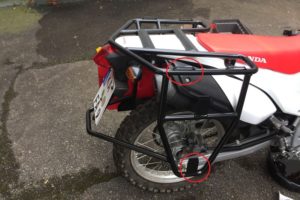
The old racks were a one-piece construction. It made them very strong, but one the other hand it was a bit complicated to remove them from the bikes. We had also welded the spacers for the mounting points onto the rack itself and that also didn’t make the dismounting easier. Usually that is not a big deal, because you don’t remove them regularly anyway. However, it was still something that could be considered when designing the new racks.
The only issue we had with the old racks, were broken mounts. After thousands of kilometers of washboard and sometimes extremely rough terrain, the dimension of the metal sheets at the rack’s mounting points was just too weak. They all broke on both racks and we finally had to reinforce them.
The old racks were especially made for Adventure Spec Magadan panniers. We actually were quite satisfied with them, but as soon as they are stuffed, they tend to hang down limply on the sides. You can get them under control by using tension straps, but it always takes a while to tame them before leaving. That was a reason to look for a better solution on the new racks.
The old CRF250L has also quite weak rack mounts on its subframe. The front-rear mounts are just thin metal sheets with a nut welded onto them. They also broke on both bikes and had to be reinforced. Luckily the mounting points on the CRF300Ls subframe look stronger. We’ll leave them for now and hope, that they can handle the stress better.
So we were prepared to change a few things on the new rack and here you can see some photos, before we’ll go into more details.
First of all – the new rack is a 3-piece construction to make it easier to remove it from the bikes. The panniers on the old rack were hanging really low and their centre of mass was also positioned quite a bit behind the rear axle. Sometimes that felt unpleasant. Especially when accelerating on a steep uphill section, we often had no pressure on the front wheel anymore and almost made wheelies. In extremely rough terrain it also happend, that the panniers got stuck on obstacles due to their low position.
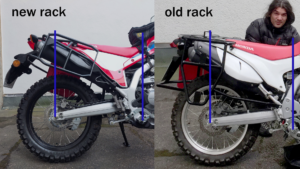
Therefore we designed the new rack to hold the panniers higher and also as much as possible to the front. Like that, we have the load more towards the center of the bike and it will handle much more comfortable. Here you can see the 2 racks in comparison. The blue marks show the rear axle and the rider foot peg positions. The mount and the weight of the spare canister is also situated more towards the centre of the bike.
The new position provides more ground clearance now and it will help to avoid colliding with obstacles, too.
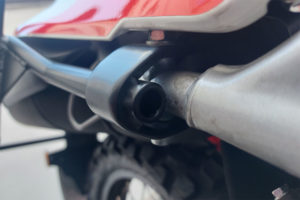
The new CRF300L subframe is not a bolt-on construction anymore, means it is welded to the main frame and this mounting point, that we used on the CRF250L, doesn’t exist anymore. Because of that, we decided to remove the passenger footpegs completely and used that spot for the main strut of the rack instead. The main strut is one piece and runs as close as possible to the fairing all the way from the rear mounts to the spot of the passenger footpegs. This strut transfers most of the load to the main frame to minimize the stress on the subframe.
We made all mounting points on the rack much thicker, compared to the old one, to make sure, that they won’t break. The spacers are also not welded onto the rack anymore. We replaced the original spacers with proper custom aluminium spacers.
Both side parts of the rack are made as a plug-in construction – means they meet where the rear fender is and plug into eachother. You can see the joint on the second photo above. The top rack is designed as flat as possible, like it already was on the old one. It does not only look great, it also makes it more comfortable to sit for a pillion rider.
To keep the panniers as close as possible to the bike, we made the alignment of the panniers tapered. It looks cool and it also reduces air resistance 😉
We used a 1.75 US gallons Rotopax canister on the old rack. Unfortunately all Rotopax canisters were completely sold out that time. So we had to look for an alternative and – since we found the old canister a bit too big for the inside of the rack anyway, we organised a smaller 1 (British) gallon canister now. After we have tested it, we can confirm, that it can hold 5 liters easily. The old rack had a massive metal frame construction for the canister. It was super solid, but also very heavy. Beside that, it could be hard to remove the canister in dirty conditions, because it sometimes got stuck.
The new canister comes with a fantastic mount. It is light, easy to use and holds the canister solidly. The manufacturer claims, that the canister can be overrun by a car or even used as a ramp. So it hopefully should be strong enough for our needs. Finally – the best of all is, that they don’t even cost half the price of a Rotopax canister. So time will tell, if they are as reliable as the originals.
One final question is left – which panniers are our new racks made for? The decision was not easy, but we managed to get something special. Thanks to the fantastic support from Bumot and Allroadmoto Belgium, we were able to organise 4 left-sided Bumot Xtremada panniers. The problem was, that these panniers are usually only made for Bumot racks and therefore only available for a few big bikes + the right-sided pannier is notched for an exhaust pipe in medium height – and that doesn’t fit on a CRF300 with a high running pipe. So we needed 4 left-sided panniers without a notch for our project.
What we like on the Xtremada panniers:
- they look strong – well, they’re “Made for the Brave”.
- their shape is wider than high – most of the panniers are higher than wide.
- It is a mixture of a hard and a soft pannier. It also means, that they keep their shape when stuffed pretty well and they don’t start hanging down limply.
- they can be installed and removed easily.
- they can be locked on the rack.
- each pannier has two side pockets. They don’t look that big, however they can even take a 1,5 liter Nalgene bottle.
Of course they still have to proof, if they are as reliable as the Adventure Spec Magadans, but the first impression looks very promising. So here are two final photos of them installed on our new custom panniers.

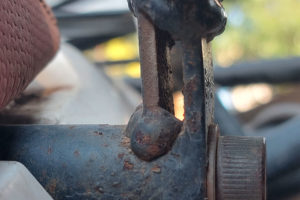
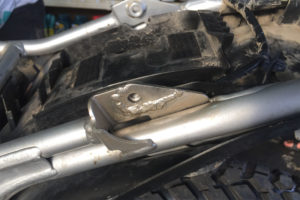
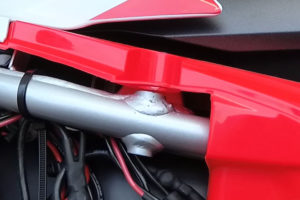
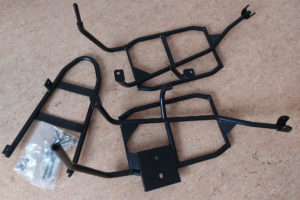
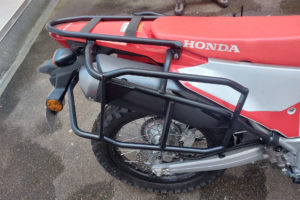
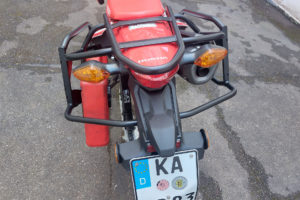
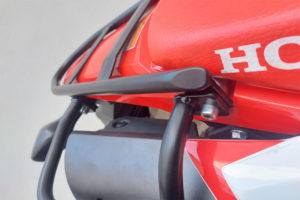
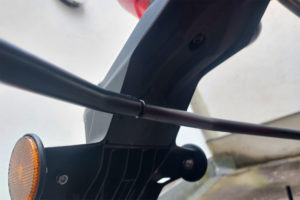
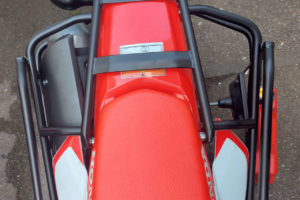
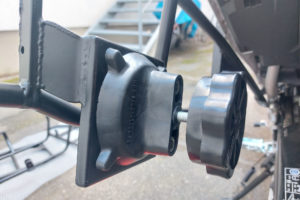
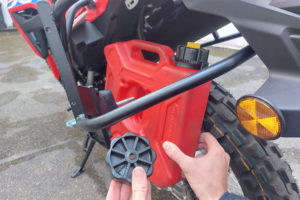
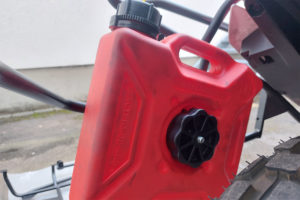
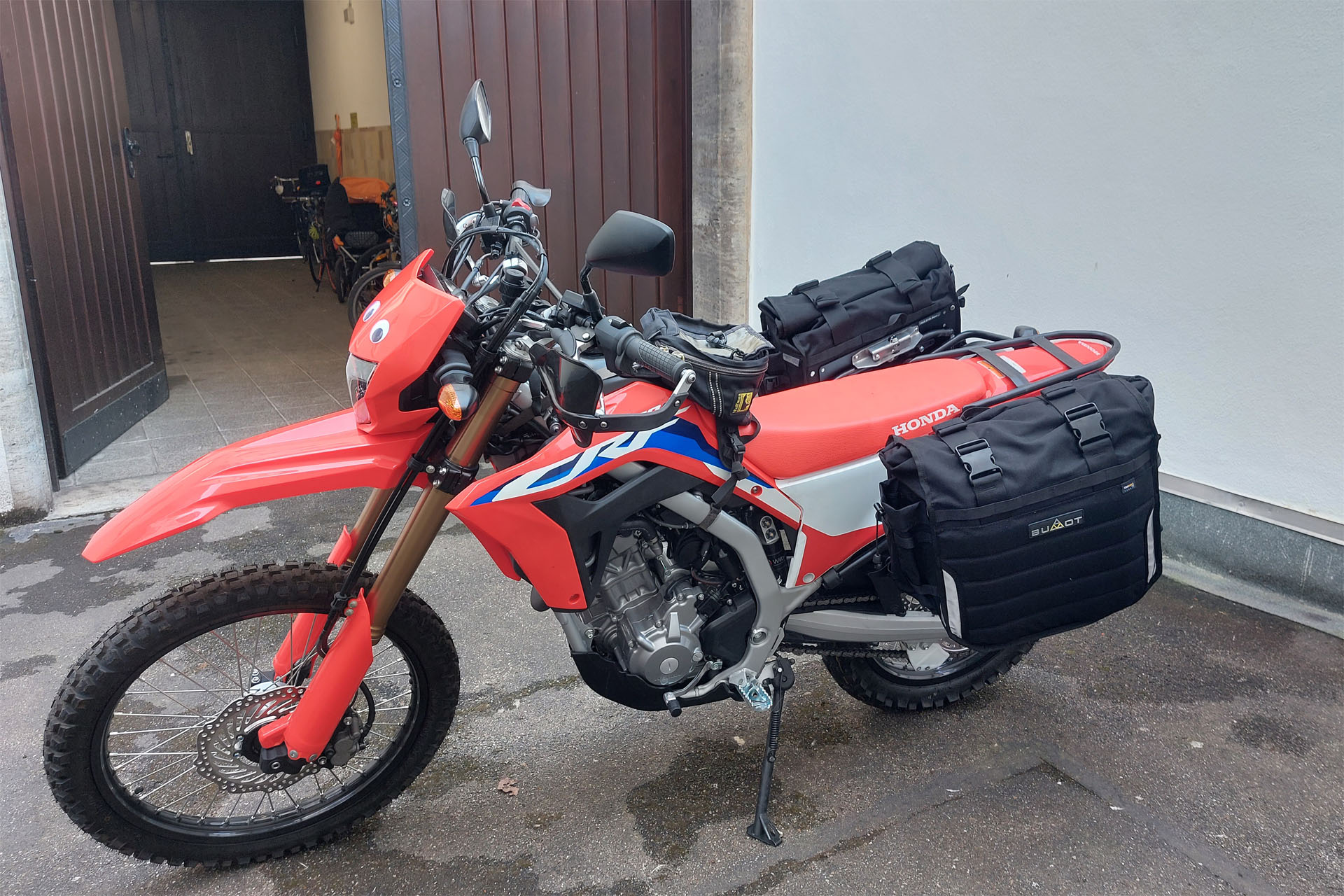
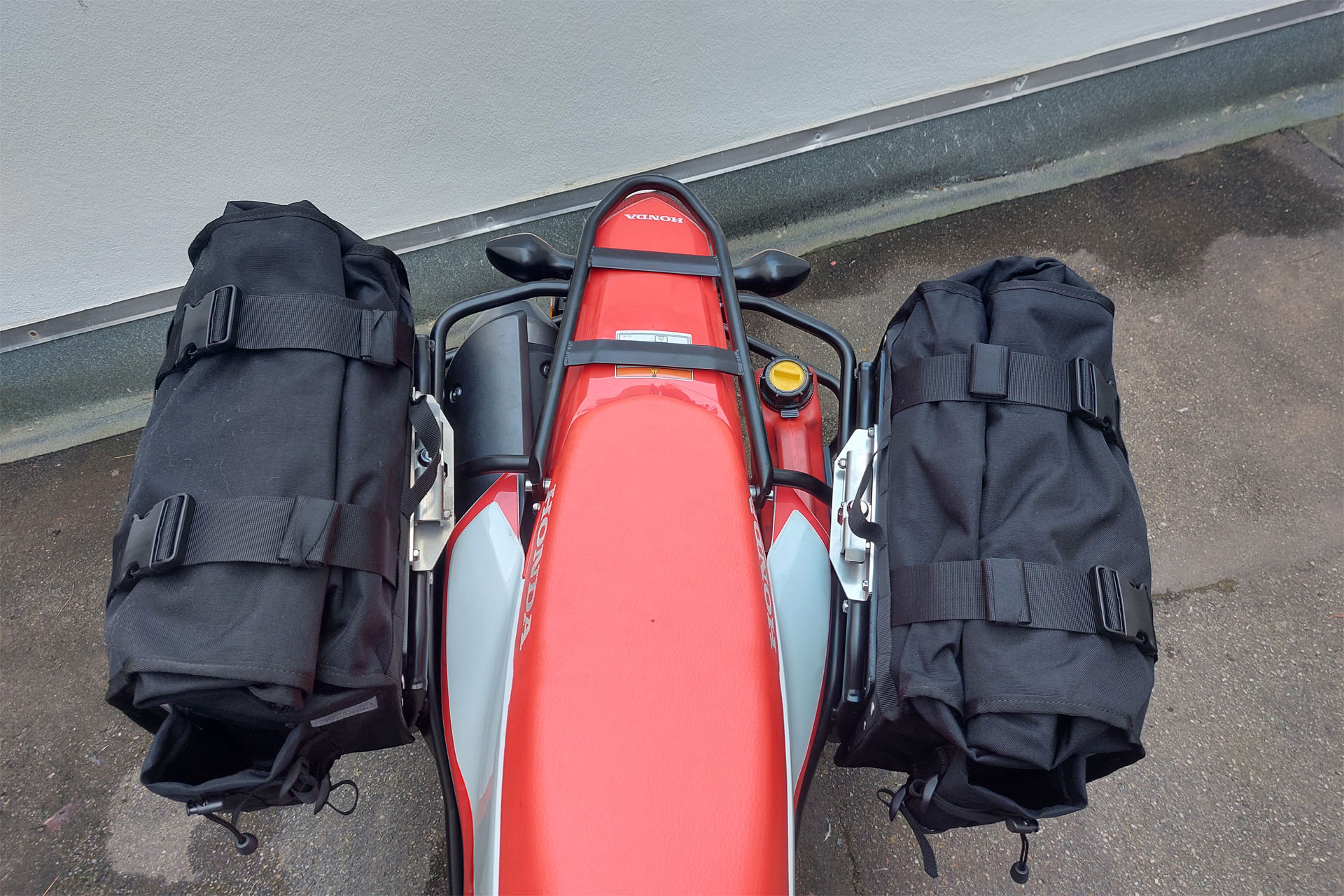
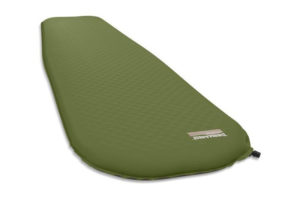
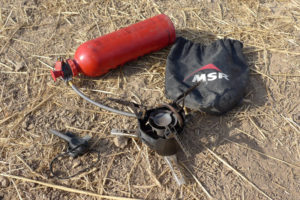
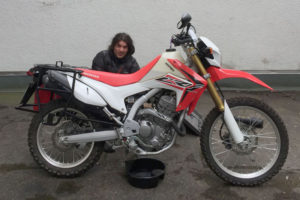

hello, where can I buy xtremada racks for the Honda CRF300L?
I’m looking on the internet and can’t find it anywhere.
greetings
Hi,
these racks are custom racks designed by ourselves. There are no commercial Bumot racks available for the CRF300L.
Hello, These racks look very nicely designed as well as strong, it’s a shame they aren’t available to purchase as they look to be amongst the best available worldwide. The pannier bag choice looks equally capable – well done!
Thanks Mark, we had a few people asking already to purchase these racks. Unfortunately, our welder is not able to produce these racks for sale.
Can you make a professional drawing with measurements of your rack, and sell the drawing?
It’s such a good design and the 300 is becoming so popular, I think selling the drawings would be profitable. Thanks!
Thanks John, we might think about that. However, we’d still need a manufacturer that is willing to produce these racks. In Germany it’s all about big bikes only.